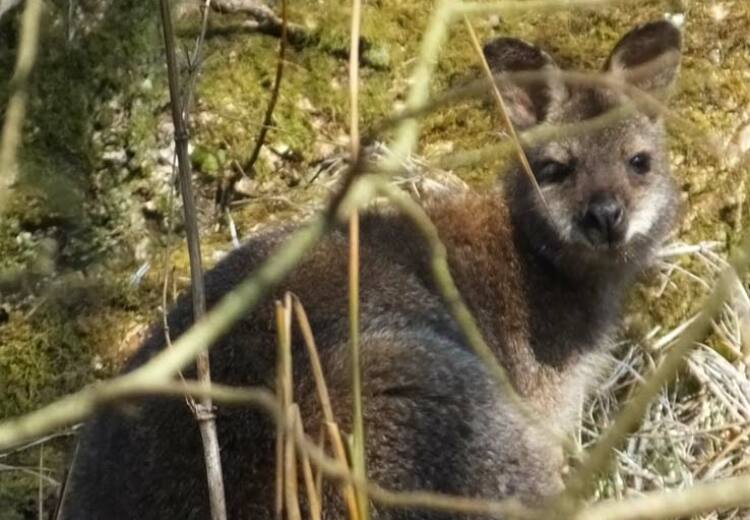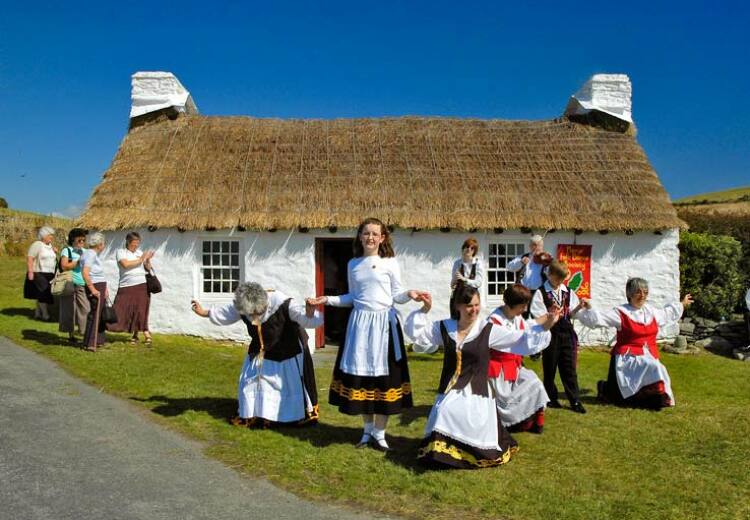The trench recently excavated for MEA’s new gas pipeline between Ramsey and Ballaugh has revealed insights into the past landscape of this part of the island. Farmers in this area often pull out large tree stumps (bog oaks) when digging field ditches.
But when MEA staff invited Dr Philippa Tomlinson of the Centre for Manx Studies, Liverpool University to visit the trenching in progress last December, she was thrilled to be able to see and photograph a long section freshly dug through the peat and silt deposits which once formed a vast wetland stretching from Ballaugh Cronk to Ramsey. “It was particularly interesting to see the tree stumps lying in the section on the top of the peat layer” said Philippa. “I have not been able to see such a long section before and it was beautifully cleaned by the digger.”
“Many stories about these bog oaks have been written, but it is clear from my research that they did not all fall down in one big storm. They are all lying in different directions and are not of the same age. The crucial point is that most of these trees were not growing where they have been found, they were washed in by flood water.”
“The trees would have been carried here by the flooding which occurred over a period of several hundred years, at a time when the sea level was some metres higher than it is today. This was happening around about two thousand years ago.”
“The photographs show the grey water-lain silt lying above the dark brown peat layer which has many orange-coloured timbers lying horizontally near its surface. Below the organic peat there is further pale-grey water-lain deposit going to a depth unknown at this point, perhaps several metres.”
Also for the first time we can see evidence of Lough Mallow (Malar-lough), mentioned in early documents and clearly shown on Speed’s 1605 map. In medieval times, the Abbot of Rushen, who held extensive lands in Lezayre, had the fishing rights in the Lough. It was gradually drained for agriculture in the seventeenth and eighteen centuries.
There are also historical records of flooding in this area by the Sulby River. In 1692 large areas of farm land were “taken away by the violence of a great water, called Sulby River.”
Philippa is hoping to take further samples and find out more about the history of the landscape in this area. “Pollen from the peat will tell us about the vegetation. Microscopic algae, called diatoms, in the grey silt and clay layers might reveal whether the sea actually came inland as far as this at some time in the past. We know it went some way up the Lhen Trench a few thousand years ago. It certainly gives a different view of the potential wetland habitats of this area, much more widespread than today. It is nice to think that when the sea-level rises again in the next few hundred years we will see a return of lakes and marshes across the north of the island and an influx of wetland wildlife biodiversity.”
Dr P R Tomlinson, Centre for Manx Studies, University of Liverpool
Ends
Thursday 27th, January 2011 03:08pm.







